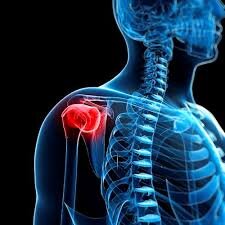Reverse shoulder arthroplasty for complex shoulder osteoarthritis
Reverse shoulder arthroplasty has been used more frequently in patients with complex shoulder arthritis. This procedure is designed for patients who have severe arthritis and rotator cuff damage that has led to significant pain, weakness, and limited range of motion in the shoulder joint.
In a healthy shoulder joint, the ball-shaped end of the upper arm bone (humerus) fits into a shallow socket in the shoulder blade (scapula). The rotator cuff muscles and tendons hold the joint together and allow for a wide range of motion. In a reverse shoulder arthroplasty, the traditional ball-and-socket joint is replaced with a prosthetic device that reverses the position of the ball and socket components.
This reversed configuration of the joint allows the deltoid muscle to take over the function of the damaged rotator cuff muscles and tendons. This can provide significant pain relief and improve the patient’s ability to perform daily activities.
The procedure is performed under general anesthesia, and the surgeon makes an incision over the shoulder joint. The damaged bone and tissue are removed, and the prosthetic components are placed in the shoulder joint. The procedure typically takes two to three hours, and patients will need to stay in the hospital for a few days to monitor their recovery.
After the procedure, patients will need to undergo physical therapy to regain strength and range of motion in the shoulder joint. The length of time for recovery varies depending on the severity of the condition and the extent of the surgery.
Reverse shoulder arthroplasty is a safe and effective option for patients with complex shoulder arthritis who have not responded to non-surgical treatments such as physical therapy, NSAIDs, and corticosteroid injections.
If you are experiencing severe pain, weakness, and limited range of motion in your shoulder joint due to complex shoulder arthritis, I encourage you to reach out to our office or click here to discuss nonsurgical and surgical options.
Andrew


![blog 1 Image[41437].png](https://images.squarespace-cdn.com/content/v1/584655e8197aeac7d8b18fd1/1563326326552-YM0ERL1SI5N5P7NMMJJ0/blog+1+Image%5B41437%5D.png)